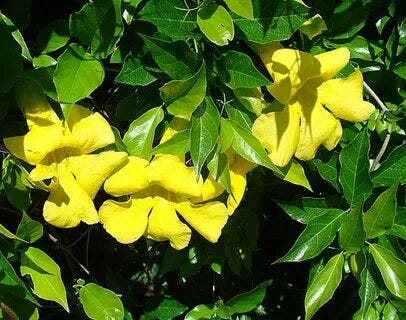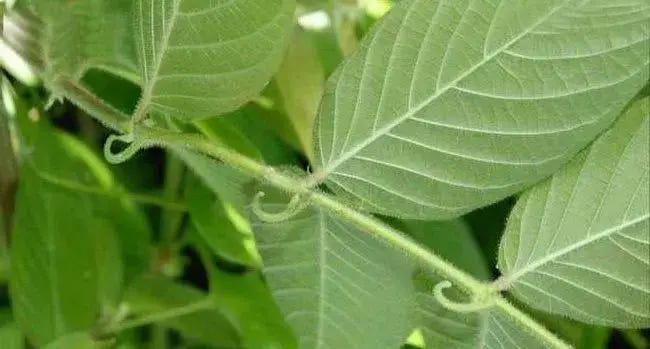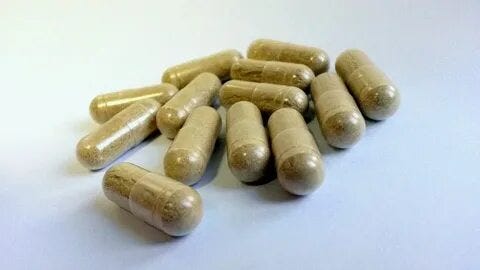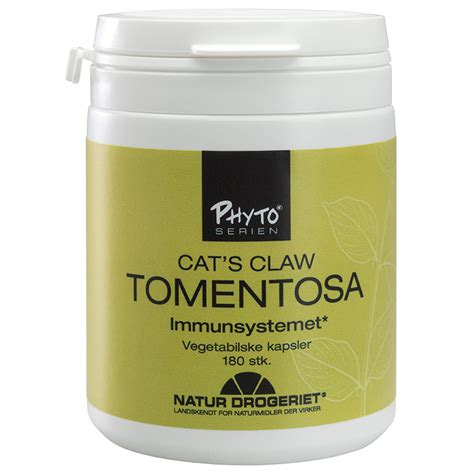6 Magnificent Properties of Cat’s Claw, (Uncaria tomentosa) by Naturopathic Healing
This article summarizes the medicinal properties of the Cat’s claw herb, what is Cat’s Claw extract good for and used for, we will discuss each Cat’s claw properties as well as drug interactions
Cat’s Claw Herb
Cat’s claw (Uncaria tomentosa) is a liana that grows in the jungles of South America, where for almost 2,000 years it has been used for medicinal purposes. This Amazonian medicinal plant decoction is extensively used in traditional medicine as an anti-inflammatory, as well as to treat diabetes, different tumors, cancer, viral processes, menstrual cycle abnormalities, convalescence, and general weakness.
Within the genus Uncaria there are also other plants such as Uncaria guianensis, which is very similar to cat’s claw, as well as other species known for their medicinal properties, such as Uncaria rhynchophylla (also closely related to Uncaria tomentosa) and Uncaria sinensis, one of the most interesting medicinal plants in Asia.
Cat’s Claw Herb Chemical Compounds
The most important category of active principles in this plant’s chemical makeup is that of its various alkaloids, which are basic, nitrogenous chemicals with distinct activity and/or toxicity. Cat’s claw herb includes them in exceptional quantity as compared to other plant species, particularly those in the genus Uncaria.
Two groups of alkaloids stand out in the plant: indole and oxindole alkaloids, which are divided into tetracyclic and pentacyclic.
A very important characteristic feature of cat’s claw and other species of the genus Uncaria is a considerable differentiation of the content of individual alkaloids in different parts of the plant, being the highest in the roots and bark (although because of a continuous decrease in the population of the plant, the export of the roots is prohibited).
What Is Cat’s Claw Extract Used For
What Is Cat’s Claw Extract Used For? The Cat’s Claw extract is classified as an anti-inflammatory medicinal plant. However, nowadays, many interesting studies have been published on its pharmacological properties, showing that Uncaria tomentosa has cytostatic, antimutagenic, antiviral, immunostimulant, antiradical, and, in high doses, contraceptive properties.
It is extensively used in anti-inflammatory therapies, to treat diabetes, menstrual cycle abnormalities, different tumors, cancer, viral processes, convalescence, and general weakness.
Medicinal Properties of Cat’s Claw: Anti-inflammatory Effect
The anti-inflammatory activity of the Cat’s Claw extract has been proven in both in vivo and in vitro studies. This anti-inflammatory Cat’s Claw Property has been attributed, at least in part, to the glycosides of kinovic acid.
Medicinal Properties of Cat’s Claw: Immunostimulant Effect
It has also been demonstrated that Uncaria tomentosa has a strong immunostimulant activity, and the total extracts of the plant are more effective than the isolated components.
Recent studies using drug extracts containing about 6 mg/g total oxindoles (quantified by HPLC) show that Uncaria tomentosa increases the synthesis of interleukins 1 and 6 (IL-1, IL-6) by alveolar macrophages in rats in a dose-dependent manner.
The cat’s claw herb has also been shown to boost the phagocytic activity of neutrophilic granulocytes and macrophages, as well as the number of monocytes in the active phases of the peripheral circulation. In normal conditions, there is no change in T lymphocyte proliferation, but there is an increase in the presence of antigens.
Uses of Cat’s Claw Herb: Antiviral Effect
Some components of Cat’s claw plant (derivatives of quinolinic acid and triterpene heterosides) are antiviral agents, predominantly with action against encapsulated RNA viruses, an action also associated with an anti-inflammatory effect.
Uses of Cat’s Claw Herb: Antiradical Effect
Certain extracts of Cat’s Claw have been shown to exhibit antioxidant activity in vitro, being able to scavenge free radicals and thus protect against oxidative stress.
What Is Cat’s Claw Extract Good For
Traditionally, it is used as an anti-inflammatory in rheumatic and arthritic processes, etc. It is also used in gastrointestinal problems, diabetes, cirrhosis, and malignant tumors. It is also indicated in viral processes.
Depending on the country, Cat’s claw is approved or not with different pharmaceutical forms and it varies a lot between Europe and America.
Thus, for example, in Spain, the Cat’s claw is used in the form of a powdered drug, infusions, and decoctions, and it is recommended to be administered after meals. The recommended daily doses of the pulverized drug are 250-1,000 mg every 24 hours. If it is used in the form of decoction, put 30 g of the drug in 500 ml of water, and then administer 60 ml of the decoction every 24 hours.
The alcohol extract of Cat’s Claw causes potent inhibition of cytochrome P450 activity in vitro, suggesting the need for studies concerning the interaction of these extracts with drug metabolism.
In Western Europe, Cat’s Claw extracts are used at a daily dose of 20-60 mg of dry extract.
A high intake of vitamins and vegetables boosts our immune system. With the infusions of cat’s claw, we can still strengthen it more at the worst times of the year.
We blame getting sick on a poor diet and that «we have low defenses«. If due to the daily life of our lives or the eating habits we carry, added to work or family stress, we can not provide our body with everything we need, this medicinal plant can help us to be up to the task.
We like to be up to date with natural remedies and get to know each of the plants and natural remedies thoroughly. Therefore, we try to delve into each of them by adding more aspects apart from mentioning what it is for and how it works.
Cat’s Claw (Uncaria tomentosa)
Common names associated with this plant:
Cat’s claw
Scribble
Paraguayan
Cat vine
Chocó
Medicinal properties and benefits of cat’s claw
Chemical composition of cat’s claw
The richness of its properties is given by the perfect combination of its components. Among those analyzed, are the following:
Oxyndol alkaloids: autoimmune, anticancer and antimutagenic activity.
Procyanidins: flavonoid found in the leaves, stems, bark and wood of U. tomentosa, which has antioxidant properties, Antiinflammatory and anti-cancer.
Quinovic acid: triterpenic acid compound extracted from the cortex that reduces the heart rate.
Uncaric acid: triterpene extracted from the bark and is effective against Mycobacterium tuberculosis (H37Rv strain).
Quinine acid: it has antioxidant properties, improves DNA repair and has neuroprotective effects on the brain.
Rhynchophyline: alkaloid isolated from the bark, which helps with seizures, lightheadedness, numbnessfoundation and hypertension.
Hirsutin: Alkaloid found in young leaves, which has antihypertensive properties, relaxes blood vessels and reduces overall blood pressure.
Mitraphylline: alkaloid which is usually found in older leaves and has anticancer effects, causing cell death in sarcoma and breast cancer.
It contains more than 30 known components, including at least 17 alkaloids, along with glycosides, tannins, sterol fractions and other compounds.
How it acts on the body
Decreases inflammatory molecules TNF-α and NF-κB
It blocks the release of iNos, an enzyme that creates free radicals as part of the immune response.
It blocks the release of COX-1 and COX-2, enzymes that play a crucial role in inflammation and pain.
1.- Stimulates the immune system and activates the defenses
The alkaloids among which much more importance is given to oxindol, present in cat’s claw, has been found to activate the production of white blood cells, which in general terms are those that reduce the progression of diseases and the development of bacteria.
In this sense, we are working openly to try to improve the quality of life of sick people (AIDS, tumors in the final state, etc.). Currently there are no serious conclusions for the case of AIDS because it interferes with commercial retrovirals, which can harm the state of health.
However, for catarrhal periods or lowering of defenses when temperatures drop, the cat’s claw plant used in infusions is enormously effective. It is used as an adjunct together with other drugs to reduce the negative effects of chemotherapy, herpes, systemic candidiasis, Kaposi’s sarcoma, etc.
In patients recovered from cancer, the number of leukocytes after chemotherapy-induced damage to DNA increased above normal levels with the consumption of this medicinal plant.
2.- Reduces the growth of tumor cells
Several parallel trials are being initiated where they study the behavior of tumor cells when a patient undergoes a medication procedure with cat’s claw.
One of the most important is the one made by British Journal of Hematology, where they found that some of the components of this medicinal plant (isopteropodin, pteropodin, isomitrafillin, uncarin and mitrafillin) inhibited the proliferation of human leukemia cells.
Likewise, and as we have mentioned before, the consumption of Uncaria tomentosa it is very interesting for terminal patients, improving the quality of life and reducing states of chronic fatigue or muscle aches.
3.- It is a powerful anti-inflammatory to treat osteoarthritis
We have great potential with cat’s claw for problems derived from osteoarthritis, rheumatoid arthritis and sciatica, reducing inflammations in the sore and congested parts.
Therefore, cat’s claw can be used in all kinds of conditions that are linked to inflammatory processes.
To treat this type of inflammatory processes, the bark of the plant and the root are used, also having analgesic and antioxidant activity.
In a 2001 study, 45 subjects suffered from knee osteoarthritis took 100 milligrams per day of freeze-dried cat’s claw or a placebo for four weeks. The researchers found that “pain associated with activity was significantly reduced during the first week of treatment.
In addition, a test carried out by the journal of Rheumatology analyzed the effects of cat’s claw in patients with active rheumatoid arthritis (RA) who are currently taking conventional RA medications. In this double-blind study, 24 weeks of treatment with cat’s claw extract resulted in a reduction in the number of painful joints compared to placebo.
4.- Improves circulation and reduces thrombosis
Numerous studies carried out in different universities (one of them)At the prestigious Shaghai Medical College) have obtained satisfactory results from cat’s claw to reduce platelet aggregation and blood viscosity. This allows it to be used to reduce cardiovascular accidents, thrombosis and ischemia, such as the ultra-well-known pharmaceutical product simtrom (Acenocoumarol).
This potential is due to some of the alkaloids present in Cat’s claw (Uncaria tomentosa) as ryncophyline.
5.- Reduces stomach pains
Since cat’s claw has anti-inflammatory properties, many of the common and chronic diseases of the stomach are associated with this problem.
Therefore, the intake of natural extracts of this plant can help us with:
Crohn’s disease
Diverticulitis
Colitis
Stomach ulcers
Gastritis
Leaky gut syndrome
6.- Reduces hypertension
From traditional Chinese medicine it is known that using a variety of cat’s claw (Uncaria rhynchophylla) had effects to lower blood pressure. These studies have been endorsed by modern medicine, acting as a blockade of calcium channels (so that it is indirectly possible to widen the blood vessels).
As a summary, cat’s claw can often be found combined with other herbs with similar healing properties, such as echinacea:
It reduces pain and inflammation from rheumatism, arthritis and other types of inflammatory problems.
It has antitumor and anticancer properties that inhibit the formation of cancer cells.
Promotes wound healing.
Treatment of gastric ulcers and intestinal complaints
Helps relieve chronic pain
Improves immunity by stimulating the immune system.
It helps people suffering from stomach and intestinal disorders, including colitis, Crohn’s disease, irritable bowel syndrome, leaky gut syndrome, gastritis and duodenal ulcers, intestinal inflammation.
Helps fight viral and fungal infections, such as herpes and candida
How is cat’s claw prepared?
We move on to an important part of the article which is to know how we can take advantage of its properties.
For the consumption of cat’s claw topically, we can usually find 2 common forms, through infusion and decoctions or through capsules that concentrate all their extracts.
Cat’s claw capsules or pills
In the market and herbalists we can acquire different tablets based on cat’s claw extract.
They usually come in bottles of 50-100 tablets of 300 mg in powder extract, recommending the intake of 1 to 2 capsules daily for 3 months. Then it is recommended to rest periods of 1 to 2 weeks and restart the treatment.
In the market we can find many pills with different compositions, with tablets ranging from 300 mg to 500 mg.
As a supplement to the diet and the benefit of its medicinal properties, it is recommended to take 2 cat’s claw pills a day. The recommendations are: one in the morning, during breakfast, and another in the evening, during dinner.
Cat’s claw infusion
If we want to consume it through infusions, we will introduce 5 grams of bark U. tomentosa or we will buy the powder extract already prepared (there is it on the market) for every 200-300 ml of water, equivalent to one cup of infusion.
Let it boil for 10 minutes and rest for another 15 minutes, to promote the release of tannins and phenolic acids. take 1 or 2 cups a day for 2 or 3 months to improve anti-inflammatory action, circulation and activate defenses.
Prepare the cat’s claw infusion in a simple and fast way. In this case, twigs of the plant are used, although you can also buy the already crushed powder.
Pour boiling water into a cup and add lemon juice to taste. The acid from the lemon juice will release the tannins in the tea.
Add 1/2 tsp of powdered Cinnamon to your cup.
Add the cat's claw to the cup. If your cat's claw is ground, use 1 to 2 tsp. in a typical tea strainer. If you are using cat's claw bark, add one to two average-sized pieces.
Let the cat's claw steep for five to 10 minutes. Remove the strainer from the cup. If you are using bark, remove the bark with a spoon.
Sweeten the tea to taste. Cat's claw tea does not have a very good natural flavor. Consider adding honey or spices such as cinnamon to improve the taste.
Cat’s Claw Cream
Cat’s claw cream can also be used as a topical treatment for arthritis, rheumatism, and various muscle and joint problems.
Toxicity of The Cat’s Claw Plant Extract
In acute toxicity studies in mice, the lethal dose 50 (LD50) of the cat’s claw herb was found to be greater than 16 g/kg.
In other 4-week chronic toxicity studies carried out with rats at a dose of 1 g/kg, it was found that the cat’s claw herb induced a slight and statistically significant increase in the percentage of lymphocytes and a decrease in the percentage of neutrophils and granulocytes. A slightly higher relative increase in kidney weight was also observed in the treated group than in the control, although no histological alteration was observed. No significant alteration was observed in the rest of the parameters examined.
On the other hand, in other trials carried out on healthy volunteers, the aqueous extract of Uncaria tormentosa administered for 6 weeks at a dose of 5 mg/kg did not cause symptoms of toxicity while inducing a statistically significant increase in leukocytosis.
Because of the above, the Cat’s claw plant is considered to lack toxicity at doses used therapeutically. However, the drug should not be used in children under three years of age because there are no clinical trials conducted in this age group. Also, it is likely that considering the immunomodulatory properties it possesses, it should not be recommended for post-transplant patients as well as in autoimmune diseases, multiple sclerosis, and tuberculosis.
Regarding pregnancy, studies have been conducted on animals, using doses several times higher than human doses, and embryo toxic and/or teratogenic effects have been recorded in one or more of the species studied. However, no clinical trials have been conducted on humans, so the use of cat’s claw is only accepted in the absence of safer therapeutic alternatives.
On the other hand, it is not known whether the components of the Cat’s claw herb are excreted in significant amounts in breast milk and whether this could affect the infant. Therefore, it is recommended to discontinue breastfeeding or to avoid the administration of the Cat’s claw herb.
Cat’s Claw Drug Interactions
H2 antihistamines, antacids, and proton pump inhibitors have been shown to decrease the absorption of cat’s claw alkaloids, thus reducing their pharmacological action.
On the other hand, it has also been shown that the alcohol extract of Cat’s Claw causes potent inhibition of cytochrome P450 activity in vitro, suggesting the need for studies concerning the interaction of these extracts with drug metabolism.
Contraindications and Side effects of Cat’s Claw Herb
At therapeutic doses, it is a safe drug, and no adverse reactions have been reported. However, at high doses, in chronic treatments, or in particularly sensitive individuals, digestive adverse reactions (such as gastralgias, gastritis, or constipation) and/or endocrine adverse reactions (decrease in estradiol and progesterone levels) could occur.
The use of the cat’s claw herb is contraindicated in the case of peptic ulcer and gastritis, since due to the ulcerogenic effect of the tannins it contains, a worsening could occur in both cases.
Cat’s claw should not be used during pregnancy and lactation due to the lack of clinical trials supporting its safety in these cases.
As we always recommend, it is advisable to consult a physician before incorporating herbs to agree on the appropriate use with a professional.
Some of the tannins it contains may offer harmful effects if over used and abused.
Generally, there are usually no complications derived from its consumption in usual concentrations.
However, depending on the consumer, the following symptoms or side effects of a cat’s claw may appear.
Diarrhea l processes
Heartburn
Generalized allergy
Dizziness
Hives or dermatitis
Likewise, as with many other medicinal plants, its consumption is not recommended in children and pregnant people, and in general to any person without prior contact with a medical specialist.
Nor is it advisable to take an extract of this plant in people with hepatic and renal insufficiencies.
by: Laurie Cullen
References Cat’s Claw Properties
The Anti-inflammatory Power of Cat’s Claw, (Uncaria tomentosa)
Cat's Claw has Quercetin in it.
Quercetin, a well-known naturally occurring polyphenol, has recently been shown by molecular docking, in vitro and in vivo studies to be a possible anti-COVID-19 candidate. Quercetin has strong antioxidant, anti-inflammatory, immunomodulatory, and antiviral properties, and it is characterized by a very high safety profile, exerted in animals and in humans.
Actions of Cat’s Claw Bark Against the BioWeapon
Most Effective: Immunity Booster, Diuretic
Highly Effective: Detoxicant, Whole Body Antibiotic, AntiInflammatory, Heavy Metal Poisoning remover
Effective: Anticoagulant, Alternative, AntiHypertensive, AntiViral, Memory Enhancer, Analgesic, AntiBacterial, AntiLukemic, Antioxidant, Vermifuge, AntiParasitic, Biofilm Disruptor, AntiTumor, Whole Body Antibiotic, Alternative, Cytophylatic, ANTIMUTAGENIC, Antiviral, Memory Enhancer, Vulnerary, Hypotensive, General Tonic, Heart Tonic, AntiAging, AntiCancer, Antidiabetic, Antimicrobial, Depurative, Immunomodulator, Blood purifier, Antidepressant, Alternative and so much more…
Cat’s Claw bark is an ‘AntiMutagenic’ plant medicine. As an AntiMutagenic herb, Cat’s Claw stops the mRNA from mutating the cells in to Spike Protein factories.
Ivermectin binds to the Spike Proteins and removes them from the body.
Research from hundreds of studies show Cat's Claw and its extracts:
• Potent antioxidant and anti-inflammatory
• Relieves pain through influence on serotonin receptors
• Enhances DNA repair
• Boosts immune health
• Suppresses cancer growth
• Protects against damage from stroke
• Improves memory and cognition
• Restores the availability of acetylcholine
• Improves cerebral circulation
• Reduces stress • Help repair brain cells
• Eliminates free radicals from within brain cells
Neurohackers who use Cat's Claw report a dramatic decrease in arthritis and joint pain.
Cat's Claw has a reputation for reducing the symptoms of Lyme Disease and Crohn's Disease.
Most who use Cat's Claw regularly report they don't get sick as often, experience less pain, and have an easier time getting to sleep and sleeping through the night.
Some neurohackers use Cat's Claw to relieve an over-active mind. Cat's Claw can calm racing thoughts and make it easier to focus.
by: David Tomen the Nootropics Expert
by: Barlow Herbal
Royal Cat’s Claw Products
Herbco.com Cat’s Calw Bark
1/4 Pound: $5.26 Pound: $11.69












